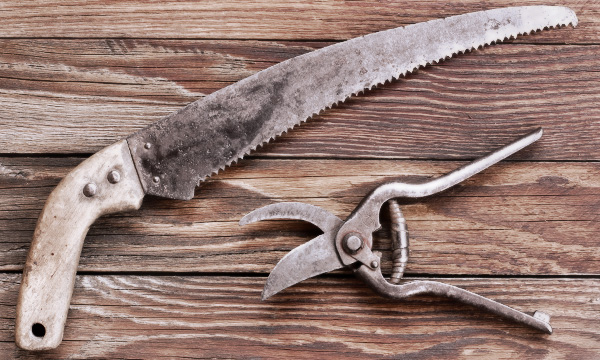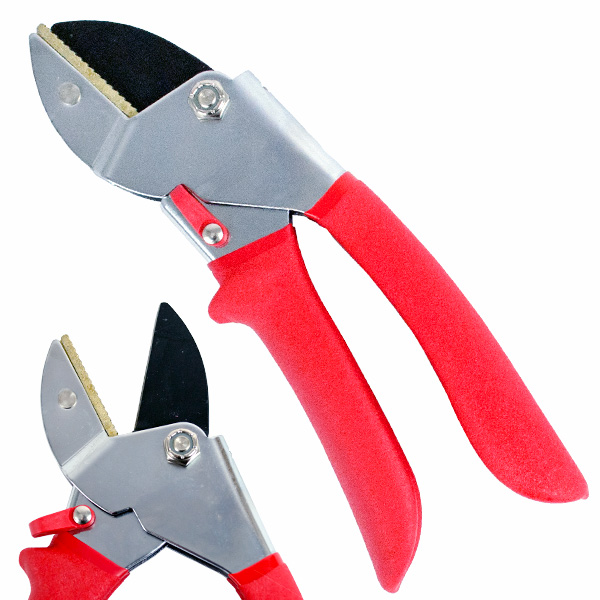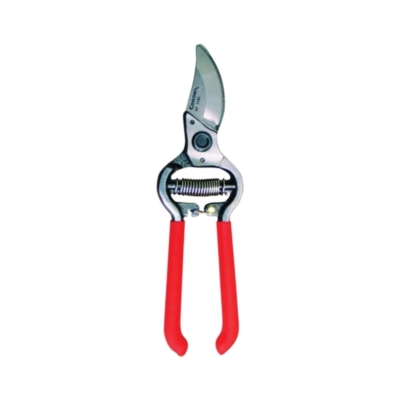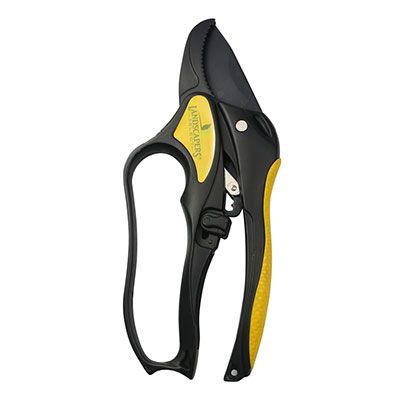PRUNERS
Everyone loves spending time in the garden. Making your little home oasis thrive can be a labor of love. But let’s face it, without the right tools it can just be labor.
One of the tools that gets the most use, but can also be a chore in themselves if you don’t have the right pair, are hand pruners. Pruners and shears do a great deal of the clearing and finishing work for any gardener. But if your pair is old, dull or busted, it’s you that’ll be doing all the hard work.
So, how do you go about finding pruners that work for you without giving yourself carpal tunnel syndrome? You have to choose carefully, that’s how. And to help make that decision a bit easier we’ve compiled this handy guide to choosing the proper shears.

Some pruners have seen better days. Replace dull blades or get them professionally sharpened to ensure a clean cut.
Types of Pruning Shears

- ANVIL PRUNERS:
- You can tell a pair of Anvil pruners just by looking at the head. It has one sharp blade that closes down onto a flat metal ‘Anvil’. These are usually a bit thicker than your average pruner and a bit heavier as well. These are great for cutting woody stems and small branches. So, unless you have an extremely sharp blade, you most likely won’t use these for floral arranging.

- BYPASS PRUNERS:
- These operate in a manner not unlike scissors. Two sharp blades sweep past each other in order to cut cleanly through stems, small branches or what have you. When you think of pruners or shears, this is usually what springs to mind.

RATCHETING PRUNERS:
A novel innovation in pruning technology, Ratcheting pruners utilize a mechanism that mechanically closes the blades. Each time you squeeze the handle, the jaws close tighter. These are a great aid to folks with diminished grip strength. The mechanism does the grunt work for you. Most Ratcheting pruners are made to cut through tougher jobs, so don’t expect nice clean cuts.
TIPS FOR CHOOSING YOUR HAND HELD PRUNERS:
- LIGHTER IS BETTER: A heavy pruner is harder to manipulate and will bring on fatigue quickly.
- SMALLER IS BETTER: No matter your hand size, a smaller pruner works well. A pruner is a simple lever, and a well designed one will not need the additional size to do the work. You’re not cutting down trees here. Save the wear and tear on your wrists.
- SIMPLER IS BETTER: The more complicated the mechanism is, the more there is to go wrong. A simple lever aided by a good spring return will give best results.
- STAINLESS IS BETTER: Moisture and sap will cause problems for your pruner sooner or later. Getting a pruner with stainless steel blades will prevent the advent of rust and corrosion.
- LONGER BLADES ARE BETTER: Sometimes. If you’re delving into thorny rose bushes or have to make a long reach, sure, long blades can be a help. But for the everyday 'Garden Variety' pruning job, standard blades work fine and keep your puner light and maneuverable.
FEATURES:
- ERGONOMICS: Specially designed, ergonomic shears are a great idea and if you suffer from wrist pain or carpal tunnel it may well be worth the extra cost. But for run of the mill pruning jobs, a standard, off the rack pruner will do just fine.
- LOCKING MECHANISMS: These can be a nice feature, protecting you as well as your blades. But some cheaply made or poorly designed locking mechanisms don’t do their job well and can actually get in the way and hamper your pruning efforts. When choosing a pruner, test out the locking mechanism and be sure it won’t be more hindrance than help.
- SPRING STRENGTH: A strong spring is great, but for folks who may not have the grip strength of a lowland gorilla it can actually make the task at hand more difficult. The spring is there simply to assist the shears in opening after a cut and it doesn’t need to be immensely strong. If you’re shears are binding, it most likely indicates that what you are trying to cut is too thick or woody and will require loppers. Also, make sure the pruners that you choose have the spring firmly attached to the handles. You don’t want it popping out and getting lost in the grass.
- REPLACEABLE PARTS: Some shears or pruners are designed with replaceable parts, like blades or springs. This is great if you have a pair that really fits your hand and makes the work lighter. But don’t cheap out on replacements, you get what you pay for.

